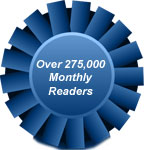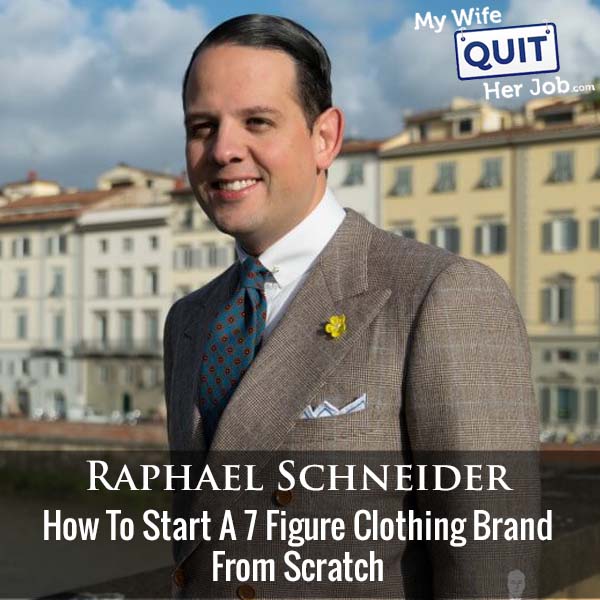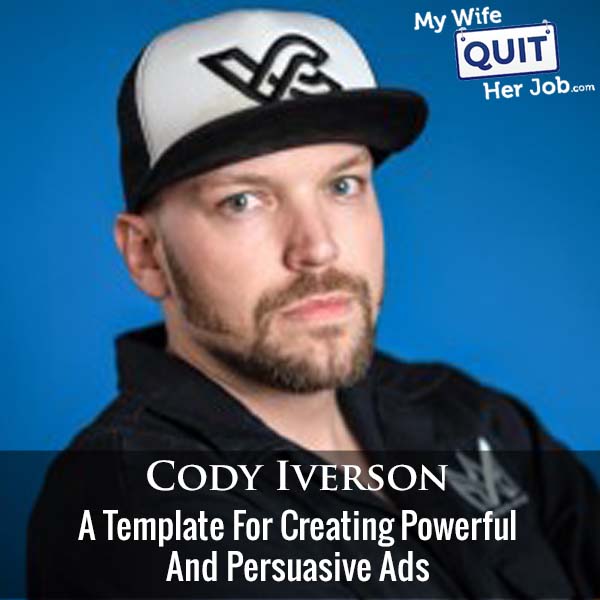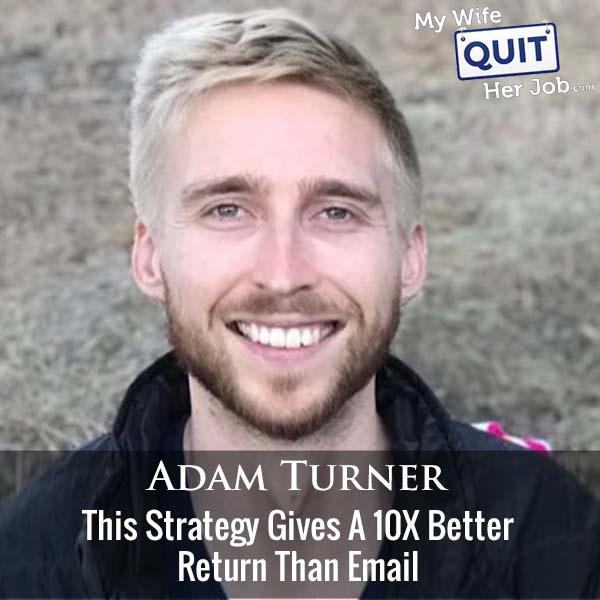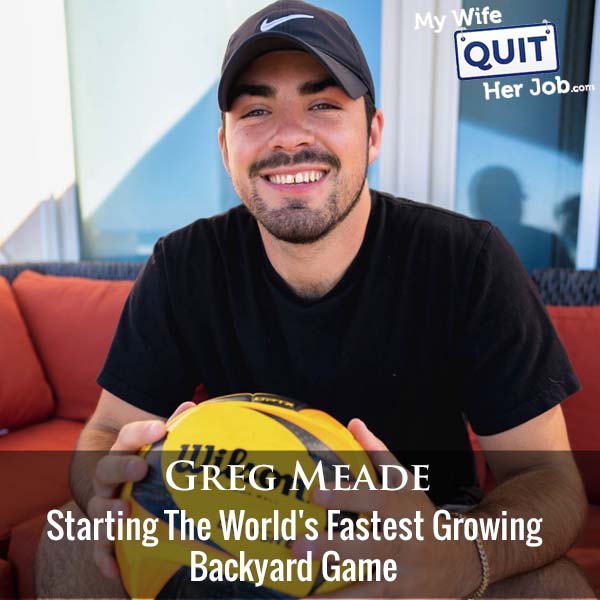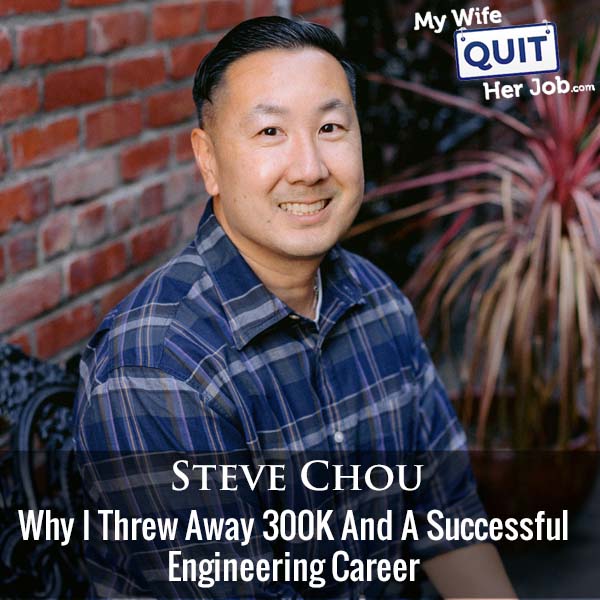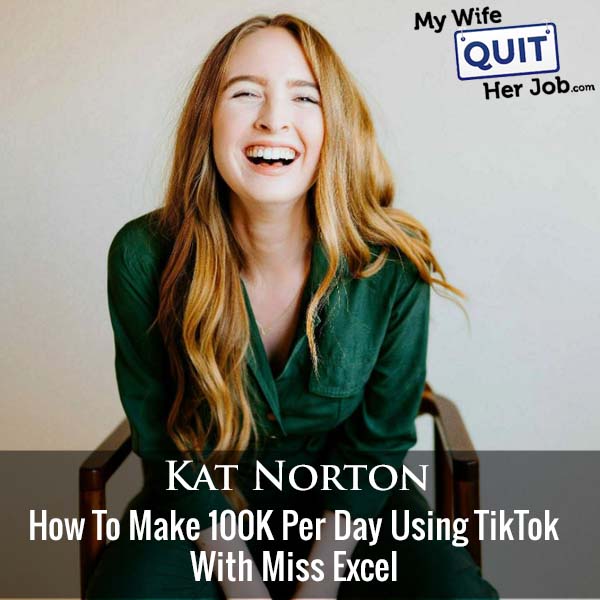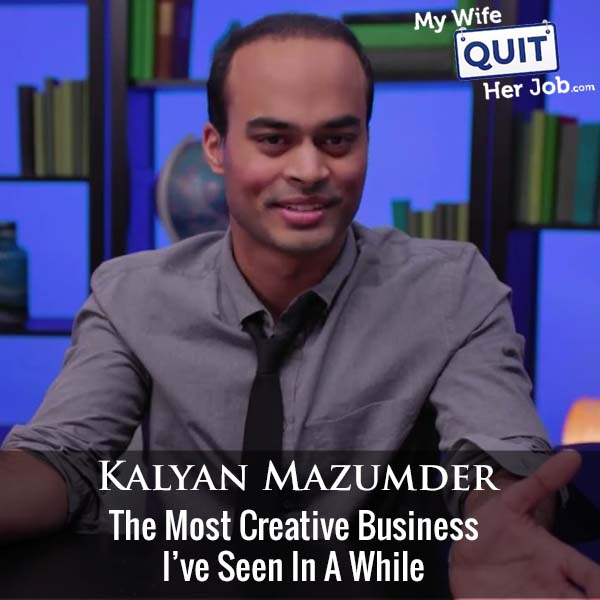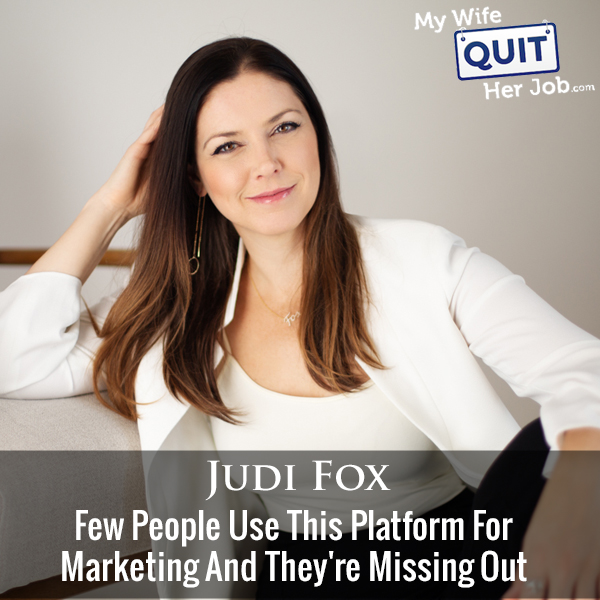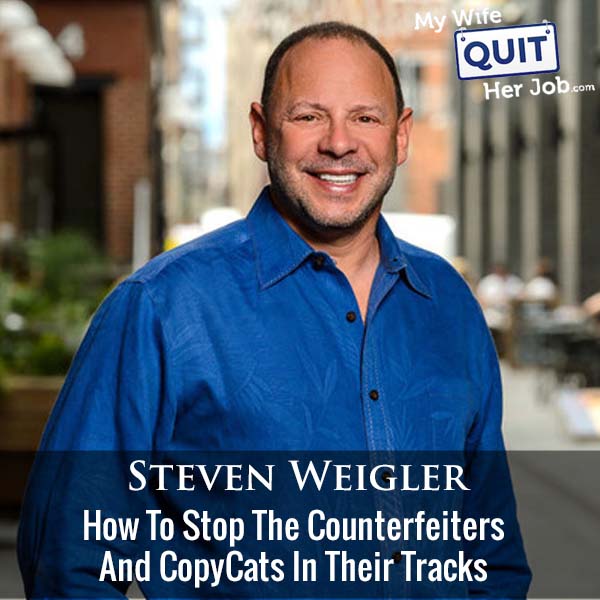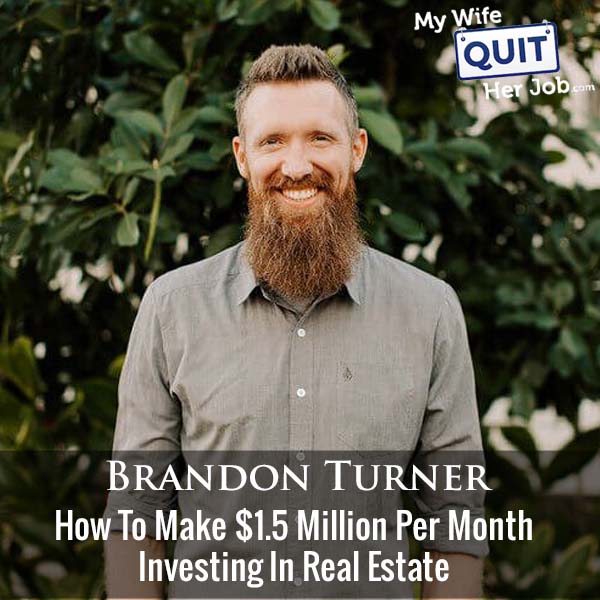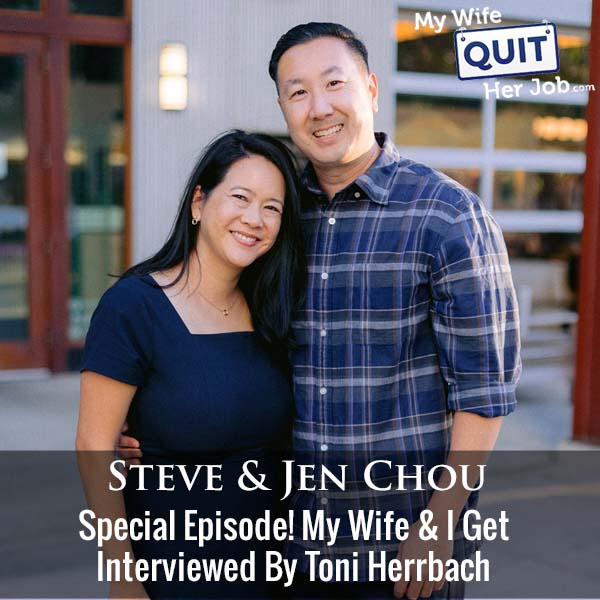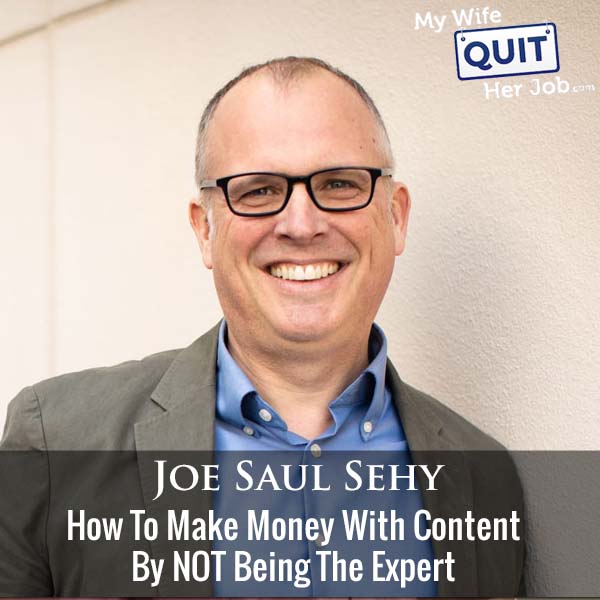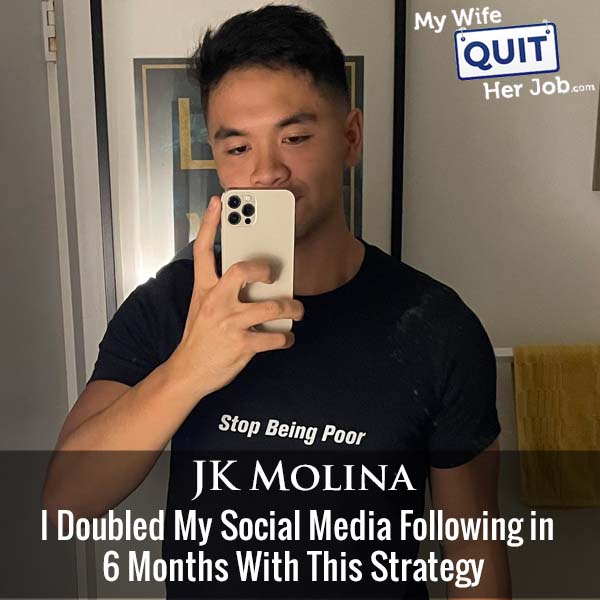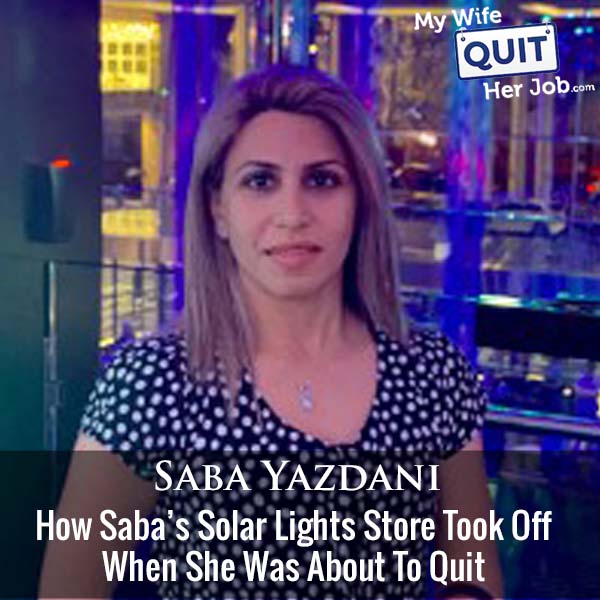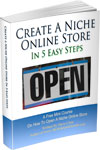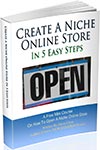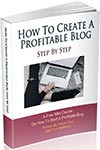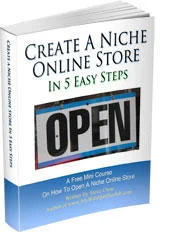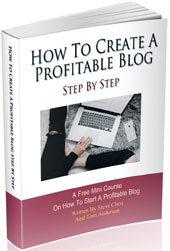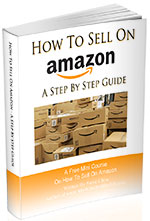Podcast: Download (Duration: 55:51 — 64.2MB)
Today, I have my friend Raphael Schneider on the show and he runs a successful men’s clothing brand.
Now men’s clothing is one of the most challenging niches to sell into but Raphael has managed to create an impressive 7-figure high-end men’s brand over at Fort Belvedere by leveraging the power of YouTube.
In fact, Raphael is so popular that I can’t hang out with him without being randomly accosted by people on the street wanting to take pictures with him.
In this episode, he’s going to teach us how he created his incredible brand.
What You’ll Learn
- How to create a successful mens clothing brand from scratch
- How to create an audience with YouTube
- How to stand out when you sell a commodity product like men’s apparel
Other Resources And Books
Sponsors
Postscript.io – Postscript.io is the SMS marketing platform that I personally use for my ecommerce store. Postscript specializes in ecommerce and is by far the simplest and easiest text message marketing platform that I’ve used and it’s reasonably priced. Click here and try Postscript for FREE.
Klaviyo.com – Klaviyo is the email marketing platform that I personally use for my ecommerce store. Created specifically for ecommerce, it is the best email marketing provider that I’ve used to date. Click here and try Klaviyo for FREE.
EmergeCounsel.com – EmergeCounsel is the service I use for trademarks and to get advice on any issue related to intellectual property protection. Click here and get $100 OFF by mentioning the My Wife Quit Her Job podcast.
Transcript
You’re listening to the My Wife Could Her Job podcast, the place where I bring on successful bootstrap business owners and dig deep into what strategies they use to grow their businesses. Today I have my longtime friend, Rafael Snyder on the show and he sells men’s clothing and men’s clothing is probably one of the most difficult niches to sell into, but Rafael has managed to create an impressive seven figure high end men’s brand over at Fort Belvedere through the power of content. And in fact, I can’t hang out with this guy without him being randomly accosted by someone on the street.
00:29
wanted to take pictures with him. And today he’s going to teach us how he created this incredible brand. But before we begin, I want to thank Klaviyo for sponsoring this episode. Always excited to talk about Klaviyo because they’re the email marketing platform that I use for e-commerce and it depends on them for over 30 % of my revenue. Now you’re probably wondering why Klaviyo and not another provider. Well Klaviyo is the only email platform out there that is specifically built for e-commerce stores. And here’s why it’s so powerful. Klaviyo can track every single customer who’s shopped in your store and exactly what they bought.
00:57
And let’s say I want to send an email to everyone who purchased a red handkerchief in the last week. Easy. Let’s say I want to set up a special autoresponder sequence to my customers to pay on what they bought, piece of cake, and there’s full revenue tracking on every single email sent. Klaviyo is the most powerful email platform that I’ve ever used. You can try them for free over at klaviyo.com slash my wife. That’s K-L-A-V-I-Y-O dot com slash my wife. I also want to thank Postscript for sponsoring this episode. Now, if you run an e-commerce business of any kind,
01:26
You know how important it is to own your own customer contact list. And this is why I focus a significant amount of my efforts on SMS marketing. SMS or text message marketing is already a top five revenue source for my e-commerce store. And I couldn’t have done it without Postscript, which is my text message provider. Now, why did I choose Postscript? It’s because they specialize in e-commerce and e-commerce is their primary focus. Not only is it easy to use, but you can quickly segment your audience based on your exact sales data and implement automated flows like an abandoned cart at the push of a button.
01:56
Not only that, but it’s price well too and SMS is the perfect way to engage with your customers. So head on over to postscript.io slash Steve and try it for free. That’s P O S T S U I P T dot I O slash Steve. And then finally, I wanted to mention my other podcast that I released with my partner, Tony. And unlike this podcast where I interviewed successful entrepreneurs in e-commerce, the profitable audience podcast covers all things related to content creation and building an audience. No topic is off the table and we tell it like how it is in a raw and entertaining way.
02:26
So be sure to check out the profitable audience podcast on your favorite podcast app. Now on to the show.
02:37
Welcome to the My Wife Quitter Job podcast. Today I’m thrilled to have Rafael Snyder on the show. Now Rafael is someone who I met at the Menfluential conference run by our mutual friend, Antonio Centeno. And we’ve also hung out a couple of times, I believe at Klaviyo and also at ECF Live. Now Rafael is the CEO and editor in chief of the Gentleman’s Gazette. And he also runs a successful e-commerce business over at Fort Belvedere.
03:04
and he’s probably one of the best dressed men that I know personally. And he actually also sells handkerchiefs among other high end men’s accessories and clothing. Now, hanging with Raph is tough because random people on the street always ask for photos with him. So literally you can’t get down the street without someone like accosting him because he’s that famous. He runs a killer YouTube channel, is a master of content, and today we’re gonna find out how he’s managed to create such a successful business.
03:33
So welcome, Raphael. How are doing, Well, thank you, Steve, for such a glowing introduction. I think I’ve never gotten something that detailed. And I also realized I haven’t updated our description because I’m no longer the editor-in-chief and I haven’t done it in a while. So where did you get that from? No way. OK. Well, it’s still on the main site. didn’t realize. When did that happen? Will have worked to do, oh, you know, like we hired a content person a while back.
04:02
As you know, in the beginning, you just start on your own and you do everything and you wear all hats and then it just gets too much. And I realized that burnout and it was actually talking to Antonio. He was like, well, you’re still doing everything yourself. And I’m like, yeah. He’s like, well, I have these virtual assistants and it really has transformed my business. Was like, me more about that. yeah, I also fondly remember influential because I
04:30
That was when we really had time to talk and connect because we hung out there. think you’re so popular at e-commerce fuel. You know, there’s so many old and well-known faces that when I didn’t know you and it wasn’t like we had just three hours over lunch that we could talk. Right. So true. I really enjoyed it. I enjoyed that. again, you are constantly accosted by random people who want a picture with you. I remember at Klaviyo, I go, it’s OK if I take a picture. I’m like, who is this guy?
05:00
Yeah, it’s when you have a YouTube channel, right? It’s like I remember that in the beginning. It was a very interesting concept because we started with written content because, you know, we started in 2010 and blogging was the thing. then I remember doing surveys on the side. It’s like, hey, what would you like more content of? And in the back of my head, I was like, well, they’re going to want video. And then I got back to survey results and it was like, we want more written content. I was like, huh.
05:25
bit disappointed and then it didn’t daunt me until much later, right? If you ask a group that comes to your site because you offer written content, what they want more of, they’re gonna tell you written content. Now, I still forged ahead and we double in YouTube early on and then didn’t do it because I felt like I couldn’t do it as perfectly as I would have wanted to and that was a big mistake. I should have just said, no, just do it and don’t be afraid. Don’t
05:54
you know, let the fear take over. And so we started in, I think, 2014, 2015 to really focus on it. And it was a transformation right now. People had a face and they connected over it. And I think that was really pivotal because now we get a lot more views on YouTube than on our website, right? And if we just had kept doing the same thing, we just would have been on the website and no one would know my face really.
06:20
But this way, it’s surprising sometimes, you you go to UPS, right? you’re at the, you’re at like this, this Chinese restaurant, you know, very humble and you go there and they’re like, Hey, I love your videos. Or, you know, I’m wearing my bike helmet, you know, all sweaty and they’re like, Hey, I love your videos, Sven. You know, it’s just really cool to see that part. Of course, in the last two years that has toned down because I’m not out and about people on about you have a mask. Right.
06:49
Once Whole Foods, a guy came up to me and was like, hey, I love your YouTube videos. I’m impressed. Like you can see my eyes and my voice. That’s it, right? Well, you were probably well dressed. I mean, you stand out, right? Yeah. I like dressing and you automatically stand out if you don’t, you know, if you dress differently. It’s like, oh, who’s that guy? Actually, I was going to ask you this. I was going to ask you this later, but let’s let’s cover it now. So when did you actually start dressing nicely? My wife is actually always trying to get me to dress better.
07:19
But for me, like, I don’t know, it takes a lot of effort. So when did you get into fashion? It was, you know, not in my childhood. Like my parents didn’t pay too much attention. My dad liked more like a loud unusual things, you know, in clothes or cars or whatever. My mom, not at all. And I just got, whatever was on sale or hand me downs, really. And it wasn’t until I was a teenager, I started buying
07:48
fountain pens on eBay, like in Germany. I grew up in Germany, so I went to school there. And you start writing with a fountain pen, no ballpoint pens. That’s what you write with. And so I heard this brand Mont Blanc and eBay was pretty new back then. And they didn’t have any age limits, so I think I could sign up at the age of 14. And I bought an expensive fountain pen. And I got it and I was like, this doesn’t actually
08:17
write better than my five dollar Lamy school pen. So I sold it again and I made twice as much money. It was like, wait a second. So I quit my paperboy job and I started buying fountain pens and selling them on eBay. And that was my job. That’s how I made money. And so I would buy lots of stuff and then sell them individually. And I, I,
08:43
once got a pair of cufflinks because Montblanc also made cufflinks. And I was like, well, what do I do with that? I probably can’t sell that. And was like, oh, I need a shirt for cufflinks. Oh, now I have the shirt with a French cuff and cufflinks. What do I do next? And then I found this book called Gentleman from Bernhard Rözel. And this kind of whole world kind of opened up for me and that my interest evolved. And I was like, wow, this is awesome.
09:12
I remember talking to Antonio, so I don’t know how you met Antonio, but I was at an event, I think it was Blog World, and then all of a sudden, I had no idea who Antonio was. This really well-dressed guy that sits next to me, and he says, hey Steve, what’s up? And I was like, who is this? But he was well-dressed, Antonio’s really confident, right? And so we just started chatting, and then we became friends, and then we started talking about fashion.
09:39
And I asked him, hey, you you’re like the best dressed guy here is like, yeah, the reason I do that is because it gives me confidence and I stand out. Right. Is that like a similar thing for you at conferences and events also? Or you know, when I when I started, right, it was it came from this like interest and passion. I’m a highly curious person. And then I also just wanted to learn more about it. Reflecting now, I think it is definitely a big part of it. Right. It’s like this
10:09
when you stand out in a way you’re known for. And I noticed that when I’m in London or wherever, people come up to you and ask you for directions. And what I realized is we all judge. We are like, hey, don’t judge. We don’t want to judge, but we all do. It happens in like microseconds and we’re not even aware of it. You’re like, oh, this is a well-dressed man. He’s probably trustworthy. He’s rich. All these associations we have come through and
10:38
there is a benefit to that. Now it just happens to align with an interest. No, didn’t come from that angle. I think Antonio is much more scientifically interested in that angle. But we came from different angles, but we both fully understand the power of it. And yet when you go to a conference, right, it’s like, oh, there’s that well dressed guy that walks around, you got to meet him. Right. And so it’s very easy for people to remember, like remember you.
11:06
I see this guy, I know who he is. Ah, yes. Right. Versus if you’re just one out of many, you have to stand out in a different way. usually stand out by saying random stuff and being loudmouthed. Maybe your methods apply better. I’m guessing. You know, what’s funny though is it’s one thing to be well dressed, but it’s another thing to actually sell men’s apparel, which in my opinion is actually one of the hardest things to sell online. Right? Yeah.
11:36
I mean, think about it, every store sells men’s apparel. So when did you actually start the store? Did the YouTube and the content come first or did the store come first? Actually, the blog came first. It was a content. No, I came to the US in 2009 as an exchange student. I went to law school. I realized I hated it. I hated law. But I still came because it was an opportunity for me to come to the US and get a degree.
12:04
I had met my wife in 2006 during an exchange semester, so we got married and then I couldn’t work because I didn’t have a work permit. And I was like, well, what do I do now? It was 2009, 2010, you no one hired anyone, let alone a foreigner without work experience. And so I was like, let’s do this blog thing. And then I was like, hey, I, I,
12:32
I was like, how long does it take to make $100,000? I was like, if you do it well, about five years. And my wife was supportive of me and said, I believe in you. think you can do this. I’m going to do the day job and make some money and then we can figure it out. Was like, cool, let’s do this. And then, you know, I would write about stuff and it’s like, oh, where did you get this pair of gloves from? was like flea market in Vienna, right? Not really useful. And then I was like, well, maybe we could
13:01
create that stuff because you know in my spare time I had visited shoemakers and shirt makers and umbrella makers and it was just a hobby and was like well I already have contacts I know where I could get that people don’t so why not create something out of this and I didn’t you know I didn’t go to business school I didn’t have any business degrees I didn’t think it through and was like well what’s a better opportunity I didn’t have a community of entrepreneurs that I could tap into and I thought oh well you know I already have this
13:31
this content side and we have followers and people are going to love our stuff and it’s just going to fly off the shelf and they’re going to buy it. And I was wrong. It took us like a year to kind of just develop everything. And I remember, you know, renting space in a self-storage facility and have products in there because not everything came and I’m not a naturally good project manager. it, you know, it dragged out, but I think we first started selling in, I think 2014, but
14:00
We first conceptualized the idea in 2012 and this eBay experience I had earlier really helped me because what I realized was I liked the marketing, I liked the photography and I hated waiting in line at the post office to ship something and to pack things up. And so from the very first day, we worked with a 3PL, which I think a lot of times people don’t do, they kind of self-fulfill. And so I skipped that step because of that past experience.
14:30
And then once we had the e-commerce channel, did YouTube. And at the time, and Shopify was technically around, but it was not known at all, at least not to me. So we started with Magento because I looked at all the platforms and I was like, well, if we ever have to upgrade to enterprise version or whatever, I’m already in the same platform and the transition is probably going to be easier. And so that’s what we chose, Magento. Are you still on Magento?
14:58
We’re still on Magento. Wow. Okay. I remember evaluating shopping carts and Magento was on my list because back then it was, you know, like the standard for larger shops. But then I looked at the code and it was really hard to understand. And then you required hefty hosting and had all these little quirks. So I actually skipped, skipped Magento, but power to you. I think, you know, if you’d start today, most people will start there, right? Cause it’s just, it’s easy. It’s, it’s lower stakes.
15:27
It scales. There’s so much you don’t have to worry about. But at the time, I didn’t know that was an option. And then, know, once you’re in the system, you’re like, well, we’re doing all these things. What’s the cost of switching now? And I’m still revaluing. I’m not married to Magento or anything. But it was also like we had this good team. You know, I felt like they were really on top of things. It was really affordable. Like, you know, doing the math. Yeah. Your SaaS apps versus, you know, one time payment apps versus how much do I pay per year to maintain it?
15:57
But there’s lots of things that go into it. You don’t have to tell me that. I’m actually still on an open source shopping cart myself. I never made the switch to Shopify and it’s free. I have to touch it maybe once every five years, five to ten years to do an upgrade. So it hasn’t been that bad. I’m curious with your blog. So you started that, you said in 2012 or? I started in 2010. 2010, okay. February 2010.
16:26
How long did it take you for that to take off? I mean, you had a five year plan, you said, but did you hit six figures earlier than that? Yes, yes, way earlier. And so then we were like, let’s do this, this other stuff. Because in the beginning we had, you know, private advertisers, you know, brands in our space, like that you and value to content and the audience. So that’s how we kind of made our money early on was ads.
16:55
Okay. For a while I thought maybe, we’re going to do it like Huffington Post. And since we started with $300 each, like I put in 300 and Theresa did 300, so 600 total. think in 2011 we founded the LLC with that capital. We were like, well, yeah, we’ll, we can’t buy traffic. We can’t buy links or anything. We’ll just do organic traffic. That was the strategy, organic traffic.
17:25
And in the beginning, it worked really well because you you optimize stuff and I was like, I’ll post every day. And then I realized, you know, I’m going to burn out and let’s do, I want to be the best piece of content on this given topic I write about. In the beginning, it worked super well, but then after a while you realize, you know, your old posts lose in the sharp results. So you have to redo them or do something else with them. And then you always have some that gain.
17:55
and others that lose so net, you maybe just shrink or you maybe increase very slightly. But I think that was our competitive advantage understanding SEO early on. And also I never kind of succumb to these like short term fixes or gains like you know, because in the early days, you could really like, you game it at add more keywords to your stuff, right. And I had read about like a Sergey Brin and like,
18:24
that they modeled Google after academic journals. And the idea was that they became more important, and more often they were cited. If you’re cited by a famous journal or by New York Times, you become more important yourself. they’re like, long-term, our vision is to provide the best search results for humans. And so that was my approach. was like, if we write really good content for humans, I will never have to go back and
18:52
make all these changes that I just did for search engines but not for humans. So that has always been our approach. Now, does it mean you never have to go back and update things? No, because you know, we grow, we learn, we add questions and all that stuff. But I think overall, that helped us grow pretty quickly. So you had these blogs that were ranking in search and then you had brands advertising. You mentioned when you first launched your e-commerce store, which was the logical step, right? Because people were asking for these products.
19:22
Why did it not work out in the beginning? I think, know, our egos or my ego told me like, wow, you know, you have these thousands of people who come to your website, you know, if I look at a conversion rate of 1%, you know, at an average order value of that, I should get X. And then when you actually had the shop and it was less than that, you’re like,
19:49
Oh, you know, yeah, because these people come for content, they don’t come to shop necessarily, right. And just because they know, or I thought they would know me and know the brand and trust it. Like, that wasn’t enough. I realized, no, you actually need a really robust marketing system. And at the time we had, I’d found like Infusionsoft. Okay.
20:16
And I found a company that integrated Infusionsoft with Magento. So we had quite a bit of data and kind of, you I felt for the size of our business were quite advanced in that field with automated email flows and sequences or whatever you want to call it, campaigns. was pretty good. But I just realized too, it’s like, you know, you need to have supporting content and really kind of show people.
20:44
what they get when they buy from you and what they get when they buy from others and then let them decide. But we didn’t have like a well thought out marketing plan. know, and our photos were like white background. It didn’t occur to me that maybe the clothes should be shown on people in a environment that people would like to be in. You know, I just had looked around and was like people do white background stuff. So that’s what I have to do.
21:12
But I didn’t know, I didn’t have mentors. It was really all a trial and error. just curious though. So you had this site and you’re selling men’s apparel. I noticed you sell like shoes and stuff too, right? Was sizing ever a problem? That was a consideration we made and we did not sell shoes on the website. We for a brief moment sold them, tried to sell them offline. But at the beginning, you know, we had this limited amount of capital.
21:41
And we made some money with advertising, but it was like, man, it’s so expensive starting a product range from scratch. Amazon was around at the time. And I was like, well, as a small fish like us, we cannot compete with them on logistics, price or anything. What we can do is compete on quality. And I also felt like there was stuff that I couldn’t find in the market. And I wanted to provide that. So it was very clear that we wanted to have our
22:11
own brand, and not just slap our name on something that you could find elsewhere, but that it was unique to us and defensible. And maybe that was part of my head was always this idea of, if you do it the hard way, it’s more defensible, because people will not be interested because they want to do it the easy way. I felt long term, that was a better thing to defend. mean, what in my head, right? That’s what I, that’s what I thought. I actually 100 % believe in that. Okay. Yeah. Yeah. And it just, you know, that was
22:41
The strategy I developed there with Teresa, like, okay, that’s, think the path we want to do. And was also the most personally satisfying path, right? Like creating your own product and exactly to your specifications. It’s much more fulfilling than just buying something from someone and put something on. And I realized, you know, money wasn’t my only driver. I realized it early on because there were like, you know, supplement stuff and you could do, it’s like, you know, that doesn’t jive with me. Yes, we all want money and it’s great, but it’s not what really kind of
23:10
made me do things. I’ve, when I knew I always had this long-term vision, right? So then I didn’t care so much about, I make a quick buck here now? Because I was fortunate enough to be the position where we were, we had enough to live by, right? would remember early on with sometimes like there was this food shelf and the neighbor was like, well, they’ve all that stuff that I would use. It was like, well, I’ll go there. I’ll get the food shelf rejects. Why not? You know, like save some money, uh, can put more money in the business and stuff. So
23:39
That was no… Yeah, I was always very resourceful. Let’s put it that way.
23:47
If you sell on Amazon or run any online business for that matter, the most important aspect of your long-term success will be your brand. And this is why I work with Steven Weigler and his team from Emerge Council to protect my brand over at Bumblebee Linens. Now, what’s unique about Emerge Council is that Steve focuses his legal practice on e-commerce and provides strategic and legal representation to entrepreneurs to protect their IP. So for example, if you’ve ever been ripped off or knocked off on Amazon, then Steve can help you fight back and protect yourself.
24:16
Now, first and foremost, protecting our IP starts with a solid trademark and Emerge Council provides attorney-advised strategic trademark prosecution, both in the United States and abroad for a very low price. And furthermore, the students in my course have used Steve for copyrighting their designs, policing against counterfeits and knockoffs, agreements with co-founders and employees, website and social media policies, privacy policies, vendor agreements, brand registry, you name it. So if you need IP protection services, go to EmergeCouncil.com and get a free consult.
24:45
And if you tell Steve that I sent you, you’ll get a hundred dollar discount. That’s E-M-E-R-G-E-C-O-U-N-S-E-L dot com. Now back to the show. In the beginning, you said you were selling other people’s brands. Was that was that in the beginning or? we never sold other people’s brands. Oh, yeah. It’s always your own brand. OK. From the get go, it was our own brand because that we were like, let’s do that and let’s have just that. And then it was like, what shall we name it? And Theresa was like, well, English country house.
25:15
I was like, well, how is it connected to clothes? then Fort Belvedere is the house of the Duke of Windsor, who was a very kind of rickish, dandy, always well-dressed, most photographed of the world in the 30s, which is, know, in the classic style realm considered to be the golden era of men’s style. So was like, oh, that’s a good connection. Domain was available. Trademark was available. I went to law school, so I thought about that, Trademark. Can we do that? Yeah, for the Gentleman’s Gazette, I…
25:45
hadn’t thought about that yet quite then and then that was harder to get because they were like well Gazette for gentlemen anyhow. were your first best-selling products? I think in the beginning I had this friend and he was like well when you go to a store you don’t just want to walk in and have one product. So it was very clear for me that we didn’t just want to be a one product brand. One thing that I was
26:11
most proud of it was the most unique one. And I also think we sold the most was an boutonniere flowers. It’s like flower. I don’t have one today, but you wear it through your lapel hole basically. And I had my wife’s family, they went on a cruise and I had never been on a cruise and we weren’t there. And you know, you wear a tuxedo and black tie and I was like, well, I’d like to wear a flower, but on a cruise ship, you know, the flower selection is limited. So I once had this like
26:38
gigantic big rose that stood up straight. was like, well, that doesn’t look like in the 30s. And I was like, well, what would it take to make boutonniers that look like flowers that I could bring on a cruise? And that’s how that developed. so that was really like that market. I don’t think was super developed. It was its infancy. I’m not saying no one else had done that before, but the way we did it was really a first and we sold that well. But even there we had to promote it.
27:07
show it to people, see what’s going on. And I realized everything we sold in the beginning didn’t sell well until we put a lot of marketing behind it. as in paid or YouTube? No paid marketing. No paid marketing. Okay. Because for us, we always felt like it was expensive. And it changed so much that I felt like I had to invest so much energy in keeping up with the changes that
27:37
And in my opinion, it’s always something that people often don’t calculate in their ad spend. They’re like, oh, I’m spending that much. I’m getting that ROI and that’s my cost of acquisition. Well, how much do all these people cost that you have to be involved in this process, which is quite a bit. know a lot of e-commerce owners that spend considerable amount of time managing their ad spends and ad budgets. And I didn’t want to do that. I was like, I believe more in this organic realm. And just figuring it out, right?
28:07
Most e-commerce people, I think when they start out, they make these product videos that you would typically put in a product page that are just like explainer videos or feature videos, I call them. And then after a while, maybe, you realize, well, there’s other videos you could make, right? This like, what’s the best pair of socks, right? And where you compare stuff and understanding what actually drives sales and what doesn’t, right? Because sometimes you see these super fancy brand videos, you know, 90 minutes with
28:35
120 cuts and this emotional music and it’s you’re like, wow, this feels amazing. But then you look at the view count and it’s like 520 people watch this. Like, you know, if there’s maybe something that 500,000 people can see, right. And it resonates with them. Maybe that’s a much better sales driver than than that. And then it’s like, what are all the things we have to do, right? How much text we have to write? What kind of pictures do we have to provide?
29:05
What about social media? How can we utilize that? And yeah, that stuff. So can we talk about then which types of YouTube videos work the best for you? You mentioned best ones and comparison videos. What else is in your arsenal? I think what we’ve decided to do as we know along the way was to say, we want to create content for a core audience. But if you just appeal to this core audience,
29:35
you are kind of limited to that. So we realized also talking to Eric Bandholz and others to have like a three tiered approach, right? Top of the funnel, middle of the funnel, bottom of the funnel, and then just structure videos to say, well, what appeals to people, right? So we, one of our most successful videos by ViewCount is a video on table manners. Now we don’t sell anything related to tableware.
30:05
right or linens or anything like that. But our thought process was that, well, a person interested in table manners will likely have an also there’s a chance that they’re also interested in what we do. So we look for that kind of correlation, right? And then a middle of the funnel video could be something like, you know, best wallets for men, right? Something like that. And then a bottom of the funnel video could be very specific, you know, like
30:34
how to identify the quality knit ties, something like that, right? So you funnel it. And sometimes you think a video is a certain funnel and that it turns out to be very different. One thing we notice is like, if a video sparks curiosity, that’s when you hit the jackpot. Because YouTube basically, they’re based on numbers. So they look at what is the click through rate from the thumbnail. So it’s like,
31:03
How does a thumbnail look? And what is the title? And then what is the average watch time of the video? Not just on this one video, but how many videos are people gonna watch? Not just on your channel, but overall, because the longer they can keep people in the platform, the more money they make, the more interested they are in showing it. And so when you look at that and analyze that, that really helped. And YouTube provides a lot of information where you can look at your audience retention and you can see, oh, when I say this,
31:32
there’s a drop when I say this, people watch it again, right? so you can say with your thumbnails, you can like, I’ll do this. And this is my click through rate. I’ll do that. And that is my click through rate. Sadly, you can’t A, split test, but you you do what you can with a platform to figure out what works and what doesn’t. I think- Share with me one of these titles that create mystery that’s worked with you. Do you have any in the top of your head that you remember?
32:02
Yeah, like for example, we did a series called, you why did men stop wearing hats? Right? Why, why, why that? And that’s just something that’s really curious for people. I think for e-commerce people, I’ve, you know, if I meet someone in e-commerce and they’re like, well, we’re thinking of getting into video. I just say, go through your customer, look at the hundred most asked questions they ask, then make videos about that. Right?
32:31
Don’t make a product video about the features and stuff. Just look at what do your customers do and what’s happening. And lately also it daunted on me, we always have the tendency to say, well, we want a lot of people to watch our videos and that’s great. But actually what can happen is it can be really bad for your channel. So there was this lady, she this DIY channel on YouTube and on average she’d get about 150 to 200,000 views on her videos in the first week. Well now,
33:01
COVID hit, she made a video about DIY masks, right? We’re like, well, DIY, know, masks super popular right now. So the video blew up, super successful. Well, now subsequently, when she brought her regular DIY videos out, people started, YouTube recommended those new videos to the audience who also watch a DIY mask video. They’re like, nah, I don’t care for that. So then YouTube sees extremely low click rate. Oh, people don’t like that.
33:31
And now she only gets about 20,000 views on a new video in the first week. So I think when you develop a strategy on YouTube, you have to understand that maybe people want you to stay in your lane. Right? I think we did once a video where, you gentlemen’s because I do gentlemenly things, we talk about etiquette, but then we talked about steak. Right. And because I was like, well, men like steak. Let’s do a steak guide.
33:59
But realistically, people don’t come to us for steak advice. The audience you groomed now is mistaken like, what is this? Am I a cooking channel? And then they drop off. I think that’s a if I could avoid one mistake on YouTube, that would be it. story is just like my buddy. Okay, he runs a personal finance channel.
34:23
And during the pandemic, he started talking about stimulus checks, that’s where all the traffic was, and he was getting millions of views. But then now that the stimulus is over, those people aren’t watching any of his other videos, different demographic, he targets like investments, people with money. And you’re right, that that totally destroyed his channel. Yeah. But it’s sometimes this short term versus long term, right? And so we naturally always kind of had at the back of our mind, who is the person we’re talking to? What do we want? You know, what do we want?
34:52
And so that helped us kind of state a path and not jumped on these shiny objects like the stimulus checks were like, right. And we all like intuitively these like big opportunities, know, blue ocean kind of thing. I think sometimes like staying the course and being true to you can really help. Same with the thumbnails, right? It’s like there was a time when these like crazy rainbow thumbnails were super popular, right? Like, well, how does that jive with our brand?
35:22
Right? Like it doesn’t. And what I realized too, through like Eric Bandholz in all of that, the strongest thing we have and can develop is the brand. Otherwise we’re just commodities and someone comes in and, know, sells it for less or whatever. But so in the back of my head, I’m like, you know, Ralph Lauren, that kind of visual identity brand that he created where people are like, I want to be like that. I live in that house. That is just much more defensible than.
35:51
if you are just, you know, a supplier of ties or pocket squares. And in the beginning, I thought, well, you know, let’s do a lot of ties in three different lengths. In reality, there’s lots of ties out there. So it’s much harder to sell it than maybe, you know, a special set of pocket squares or something like a boutonniere where there’s just not as much competition out there. And I think I like that. never liked fields like, know,
36:19
personal real estate where I feel like there’s so many people competing in the pool and it’s people to try to outdo each other by working harder. like to be kind of a big fish in a small pond rather. So for your YouTube videos, and I think I asked Eric Banholtz this question, do you have a way of tracking people or is it just an uplift based on, you know, when a video
36:47
hits, you just naturally see a correlation in sales. Yeah, no, that’s a good one because that was always, you know, one thing that kept me from like wanting to spend a lot of advertising was like, well, how do I know the attribution? Because what I saw was like, you know, well, I sold $100,000 worth of stuff. But if I add up all my attribution, I sold $300,000 worth of stuff. So I was like, well, I didn’t, I only sold $100,000. Everyone claimed
37:17
credits for everything 100%. Well, that’s not how life works. And then we found this thing called, I look at different attribution platforms, and we found like wicked reports. So we did that and we got it early. we pay a nice price. I think it’s not more expensive now. But the concept behind it is like that you basically add UTM parameters to everything. Because on YouTube,
37:47
you know, people will likely just click through, click through cards, click through a link to the description or, and that way you can really have a better click attribution. So that now there’s, think, more sophisticated solutions in the market where they’re like, well, we use click data, we use view data. And if you have a video that goes viral and we see a correlating spike in sales, then we attribute that much to it and stuff, right? So, yeah, I always liked that attribution.
38:16
So we now on our back and say, well, we produced this type of content and this is what happened. But all the people like to always focus on the sales, right? It’s like, oh, how much it sell. But I also realized, well, there is, you you have these micro conversions where it’s like, maybe they became a subscriber, right? Maybe they became a subscriber on YouTube. Maybe they just, you know, came back and watched it. And even if they can’t buy right now, they tell a friend about it. So to me, there’s
38:44
more success than just how much they sell. And for us, it’s also like how much advertising does it generate? But then also we have a value of like, does this further our brand and brand value? So if we do a video about, let’s say, what it means to be a gentleman today, and even if this video had minimal amount of views, no sales, I would still consider it a success in the sense that we foster this kind
39:14
culture that our brands stand for. And I think that’s important too and brand building probably. And I think one thing that I’m proud of what we’re doing is that we’re not just analyzing the market like, know, SEO analysts and saying, well, what are all the things that are out there? We’ll do what’s best and try to outrank people or create skyscraper content, but that we actually sit back
39:43
with people who love this passionately and say, what would a person really want? And that allows us to create innovative content that wasn’t around before. And someone you hit a home run where you didn’t know it existed, right? Because no one else talked about it. And you just created something and that, I think people over the long term will notice, right? If you see the sixth video about…
40:12
confidence and why you should do this or that, right? And just spun in a different way. think Antonio has like four videos on how to roll up your short sleeves, for example. I mean, he’s been doing it a long time. He’s got variations of everything. Exactly. But they’ve, they’ve been super popular, right? And that’s great. And we’ve done a redo of a how to fold the pockets for video because we felt like, you know, this is so old, this could be a lot better. Let’s, let’s do it. But I’m like, I don’t, I was like, Hey, I’m, I’m proud of
40:42
doing something new, right? And other people are like, oh, they did this was successful, we’re gonna do it. And that’s okay, right? I’m not like, I had this idea, our team had this idea, and we own this. I’m like, yeah, you know, someone else can just pick it up and make a better video. And that’s cool. And I can do the same, right? We’re all it’s an ecosystem. But we, we try to not just look at the numbers, but also look at it from a brand and individual perspective. Yeah.
41:12
And it sounds like you’re able to spot trends before they become popular, right? So that you’re essentially like the pioneers once it does become a mainstream. Yeah, I mean, I think we are realistically, we are a niche content. think none of the stuff we do is really mainstream. So I don’t really look at that too much. You know, it’s like, as long as are stopping on the streets. So it’s kind of mainstream.
41:38
Okay, okay, okay. I know what you mean. Yeah, yeah. Okay. I see what you mean. Yes. Yes and no. I’m like, you know, if we talk about attache cases, you know, I don’t think attache cases will ever be mainstream or like, what head fits your face shape, you know, like fedoras are not mainstream. I don’t believe they’re going to be mainstream. But I believe there’s an audience that we can serve that right.
42:04
then you’re like, oh, people who like fedoras are also interested in ascots, you know, stuff like this. Sometimes people who like to dress in a special way, right? Are interested in those unusual accessories, for example. So like, okay, let’s, let’s focus on that. Then of course you can have something like socks, right? Everyone or the market for socks is a lot bigger than the market for a boutonnier or maybe even pocket squares, right? Cause the pockets were for most men, it’s like a
42:33
celebratory thing, you know, if my wedding, I want my pocket square, my hand could shift. It’s not like they wear that every day with socks. You have the opportunity that someone potentially wears it every day. And I think, you know, when you talk to like business analysts, they’re like, well, do you have a subscription product? No. Do you have a consumable product? Well, kind of. But with a brand, right, if you build your brand on like quality and longevity, that kind of goes against that.
43:01
But we’re like, we still like that. And maybe there opportunities to do, you know, consumables like, you know, the razor companies or whatever, where you’re like, Hey, you new blades, right? Every deodorant companies, all that stuff. Maybe we’ll have a gentlemanly deodorant, right? Where we’re like, we really like that. We like the sun profile for that reason. And even Eric from Beardbrand, you know, they started with beard oils, well, now they have hair products and soap and things that are
43:31
accessible to everyone, not just people who are into beards. I’m still sure that they sell most of their stuff to people who have some connection to beards, right? Yes. My wife is looking to say, Oh, let’s buy soap from Beardbrand, unless she maybe smelled it and was like, this is amazing, right? And I want that. But at first, it’s like, that’s not for me. I’ve done it a beard. Like, why would I buy a beard brand soap? Has your YouTube channel revenue? I don’t know what the revenue breakdown is, but
43:59
I assume you make more from the e commerce than you do just YouTube revenue. Is that accurate? Absolutely. Yes. Okay. Make about 25 % from ads. You know, there’s website ads, there’s YouTube ads, and then there’s website revenue. Now, that being said, you know, it’s, we can definitely see a change in what is called RPM revenue per thousand views. Yep. It’s definitely going up. And personally, I think, you know, looking at I don’t know,
44:27
TV ads and what people pay there and YouTube what people pay there. I’m hopeful that in you know, five, 10 years from now, RPMs on YouTube will be a lot higher. And of course, if you are a main player there, and you can, you know, get the higher RPMs, and you can increase your audience and your footprint, I mean, that can lead to massive growth. And of course, that kind of revenue is, you know, there’s no
44:57
returns department. There’s no customer service. Yeah, that’s what I was getting at. Like if it’s big enough, would you ever consider just becoming a media mobile, you know, on YouTube as opposed to I, you know, I like my vision is that we are a brand that creates high quality stuff for gentlemen, not just in the clothing world, but I’m also thinking about having a nice Chesterfield sofa, right? And becoming a lifestyle brand, not for women, like
45:25
just for gentlemen in that style. That’s just something that I would find personally satisfying. So it’s something that I would drive to and I would use the revenue that I generate from the content to make that a reality, right? One of my kind of goals is not like, oh, I want to make $2 million or whatever. But it’s like, I want to host a party at the Rosecliff Mansion in Newport, Rhode Island, where people can all come and dress up and then learn from each other, hang out. And that’s something where I’m like,
45:56
that would get me really excited or how about, you we rent a cruise ship on the Nile that, you know, Agatha Christie’s Poirot was on and we do something like that, like events and maybe we bring tailors and that’s something I’m like, I want to do that. I’m not like, I just want to see where I can make the most money and do that. I’m well off. Can I always make more? Sure. But do I want to increase the channel and build a team? And yes, I do.
46:25
but not just so I can make easier money or money more quickly. So the answer is no, I would not say I’ll just become a media company because that’s where all the money is. Well, no, the reason why I was asking, I e-commerce, I use 3PL, so I guess it’s less. But, you know, there’s a lot more things to worry about, Absolutely. I mean, I don’t know what to do, but I like the, you know, the complexity of figuring it out.
46:53
Again, I always did mindset of, know, if it’s too easy, it’s easier to replicate. So if it’s more complex process, it keeps out all the amateurs, right? I felt like that about YouTube, for example, I was like, when I started Facebook was still popular and you could get a lot of organic traffic. But then, you the barriers to entry were low with Instagram, right? How many menswear Instagramers are out there? A lot. Because what’s barrier to entry, you need a phone and a filter. And that said, well, with YouTube,
47:22
to make consistently good videos, you need the gear, you need the people to edit and put it all out. So now you’re talking there’s a competitive pool of 20, maybe the largest sense, right? So I always like that being among fewer and not trying to flip houses, right? Because it’s just, yeah. Yeah, I totally agree. This is why all those ecommerce business models out there that are
47:51
that appeal to most people, they’re easy, but because they’re easy, they’re actually hard. In the long term, right? Easy to get in, then to kind of stay in there, remain successful, building something, that I think gets much harder. And that’s why I like it, right? It’s like, okay, like if you want to do YouTube well, consistently, I we have a huge…
48:17
expense around that. That’s our marketing expense. Most people don’t think they think marketing and ecommerce, they immediately go to paid ads. And we’re different. like, no, for us marketing is everything that we do to bring the product to market, which for us is just that content basically.
48:38
Cool. mean, that’s the way to build a brand. I mean, many ways though, pay-per-click is faster, right? I you can just drive traffic right away. Whereas your content method is more of like a slow burn, right? A slow ascension. Exactly. More solid foundation. Yeah. And we also look at videos, and sometimes you videos that just are really strong out of the gate and then they stop. And then there are other videos, you you start, they’re just like slow burner.
49:08
but over time get you all that, you know, traffic attention and brand recognition. And I mean, if you look back, right, mean, Ralph Lauren didn’t make content and create great brand. There’s lots of brands that didn’t create that content. It was just one avenue that was available to me and I kind of liked it. I’m also a bit, you know, bummed. I think I just never figured out how to do paid ads. I think there was a time when if you figured it out,
49:37
we could have grown much faster and done things differently. So I’m not saying, you know, paid ads are bad and, and you shouldn’t do them. I’m just like, it didn’t work for us. I didn’t, I, I felt like this was more in my wheelhouse. And I think when you talk to different people, I was at e-commerce, everyone figured out an angle that worked for them. know, some people are really active on Reddit. Other people are really active in a forum. Other people do this. Right. And I’ve,
50:06
I’ve met anyone who’s like the gorilla on all the platforms, right? Some people do podcasting and they love it and it works really well for them. And I, you know, I’ve thought about podcasting and was like, nah, the barrier entries are lower, right? What do I need? A focus right box, a nice microphone. It’s easier to sit down. And it’s also probably because I personally don’t listen much to podcasts because I don’t like commuting. Then I’m not, you know, I don’t…
50:36
naturally think of it. But I realized there’s an audience on every platform. There’s people who like clothes, who love podcasts, or videos or Instagram accounts. It’s not this like, oh, people who make that amount of money, they don’t watch YouTube videos, or they don’t listen to podcasts. I don’t think that’s true. I think you can find people everywhere. And it’s just what jives with you and your channel. And I think if there was one new channel we’d focus on right now, it would be linkedin. I feel like that
51:06
drives the most with the kind of person that, you know, we may be looking at. It wouldn’t be like tick tock, you know. And sometimes or it’s funny when these new trends come along like YouTube shorts, for example. We haven’t made a single YouTube short video yet. And it’s it’s interesting when you talk to other people who’ve experimented with it and you know, YouTube obviously recognizes Hey, this is your channel. I don’t think it cannibalizes the overwatch time you have. And maybe we’re losing out. But it’s like
51:36
And it’s a bit more, you know, it’s just like dopamine rush, right? One minute short video. And I’m not saying we’re never going to do that. So far, it just hasn’t fit into our brand strategy. So we skipped that. got to your dance lessons first. What? You’re not done taking your dance lessons. Right? Well, yeah, yeah. But it’s maybe it’s wrong. know, like, there’s always this opportunity. And there’s so much opportunity, right? Oh, I could do attentive.
52:04
text message marketing, right? Or I could do use Klaviyo, I could do this, I could do that. could do and what I noticed is like, I’m actually better off a focus on one thing. absolutely. Figure out and do it right. Rather than trying to dance everywhere. Not well, because I don’t know all the dances. That’s actually great advice for anyone listening. Hey, Rafael, it’s a pleasure having you. Where can people find you if they want to know more about your business?
52:34
Gentleman’s Gazette dot com or on YouTube. I mean with the links out there. I think you know we do something on Instagram. We’re not on Twitter really Facebook a little bit But yeah YouTube and then our website is the bread and butter of what we do. Yeah And you can usually spot Rafael on the streets. He’s usually wearing a nice jacket. Maybe an ascot fedora maybe You know actually fedora’s I noticed I
53:03
I got a lot of breakouts. So when I wear fedoras for long time, I get like zits all over. I’m not a… Preston here, Preston on our team, you he wears a hat every day. It’s just how he jives. And I think I’d like the look of it, but it just doesn’t work for me in that sense. I also, you know, I also wear, I mean, I bike my daughter to school. So I wear like boat shoes and shorts and a polo shirt, right? I’m not, I always wear this. And we just, think we’re producing a video.
53:32
I don’t think it’s quite out yet, but what do we wear at home? What do we actually wear? It’s not like this. I always have to do that, but I enjoy it. I’m like, oh, what time I’m to wear, what shirt, what jacket. And I enjoyed it. I have to say, with COVID, I definitely noticed I did not wear my tuxedo at home, a black tie. It was more like I wore a pair of corduroys and a shirt and a cardigan.
54:02
I don’t have sweatpants and hoodies in my wardrobe. you have a t-shirt? don’t think I’ve… I’ve had a t-shirt like when I work out, know, I have t-shirts, but sometimes I’m also like using an old polo shirt for it or know, stuff like that. I don’t wear t-shirts to anything but a workout. Yeah. Really? Because they’re like, well, I could wear a polo shirt instead, you know, same kind of functionality. I like that more, so I wear that.
54:31
Cool, Rafael, I appreciate your time, man. It good chatting with you and I’ll see you in just a little bit, actually, in person.
54:39
Hope you enjoyed that episode. Now if you want to start a men’s clothing brand today, you pretty much need to be creating some form of content to build an audience. Now doesn’t have to be on YouTube. It can be blogging, podcasting, TikTok. Just pick your medium and stick with it. For more information about this episode, go to mywebquaterjob.com slash episode 410. And once again, I want to thank Klaviyo, which is my email marketing platform of choice for e-commerce merchants. You can easily put together automated flows like an abandoned card sequence, a post purchase flow, a win back campaign.
55:07
Basically all these sequences that will make you money on autopilot. So head on over to mywifecoupterjob.com slash KLAVIYO. Once again, that’s mywifecoupterjob.com slash KLAVIYO. I also want to thank Postscript, which is my SMS marketing platform of choice for eCommerce. With a few clicks of a button, you can easily segment and send targeted text messages to your client base. SMS is the next big own marketing platform, and you can sign up for free over at postscript.io slash Steve.
55:34
That’s P-O-S-T-S-U-I-P-T dot I-O slash Steve. Now I talk about how I these tools on my blog, and if you are interested in starting your own eCommerce store, head on over to mywifequitterjob.com and sign up for my free six day mini course. Just type in your email and understand the course right away. Thanks for listening.
I Need Your Help
If you enjoyed listening to this podcast, then please support me with a review on Apple Podcasts. It's easy and takes 1 minute! Just click here to head to Apple Podcasts and leave an honest rating and review of the podcast. Every review helps!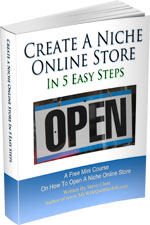
Ready To Get Serious About Starting An Online Business?
If you are really considering starting your own online business, then you have to check out my free mini course on How To Create A Niche Online Store In 5 Easy Steps.
In this 6 day mini course, I reveal the steps that my wife and I took to earn 100 thousand dollars in the span of just a year. Best of all, it's absolutely free!

